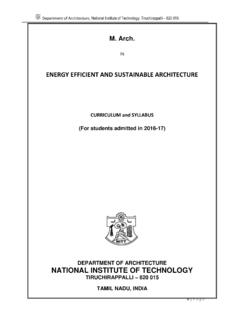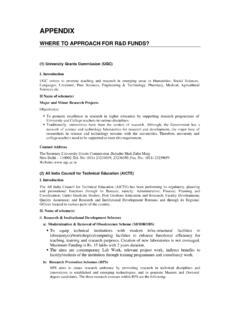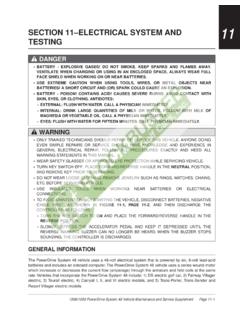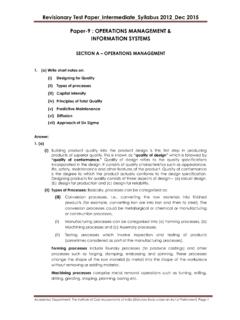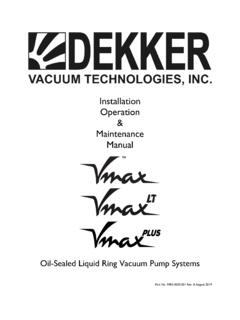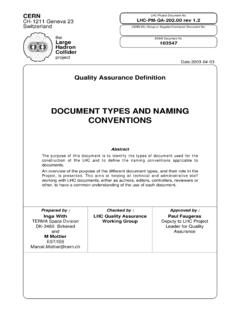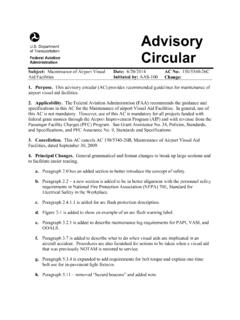Transcription of Swimming Pool Maintenance - National Institute of ...
1 Swimming Pool MaintenanceSteps to remove algae in Swimming the walls and floor of the Swimming pool to remove as much of the algae as possible. This will greatly reduce the amount of time it takes to kill and clear the algae bloom. that the pH level is within the range of - This will ensure that any chlorine added will work more efficiently - high pH levels in particular will impair the efficiency of the chlorine doing its the pool filter system running, add a chlorine based Swimming pool shock at the rate of kg. per 1,00,000 litres of pool water dosage for killing algae. The pool filter system should continue to run 24 hours a day.
2 The condition of the Swimming pool does not significantly improve after 12-24 hours of filtering, add a second dose of chlorine pool shock at the increased rate. Repeat this process until the algae has been eliminated. the algae is dead it will turn a white or grayish color, and it will be suspended in the pool water or settle to the floor. When there is no longer any sign of the color green in your pool, thoroughly vacuum the Swimming pool. It is recommended that you vacuum dead alge to waste and not through filter. pool filter should be backwashed or cleaned to be sure that dead algae is not trapped inside the filter. If the filter is not thoroughly cleaned the algae may quickly return.
3 And balance all of the pool chemical levels using the following guidelines. Free Chlorine: 1-3 ppm, pH: , Alkalinity: 80 120 ppm and Calcium Hardness: 200 350 ppm. adding an algaecide pool chemical on a weekly basis to prevent algae from returning. Tips Pay closer attention to the chlorine level of your Swimming pool water in the future. Algae and harmful bacteria are almost immediately destroyed by a free chlorine level of 1 ppm or higher. You have experienced an algae problem because you have not properly maintained the chlorine level, and it was allowed to drop below 1 ppm. Test pool water frequently and make any necessary adjustments for a clean, safe and easy to maintain Swimming pool.
4 Chlorine pool shock needs to be dissolved in a large bucket of water before it is added to the Swimming pool. Always add chemicals to water when dissolving. NEVER add water to chemicals. Monitor your pool filter system closely during this entire process and thoroughly backwash or clean the filter each time the pressure rises 10 psi. above the normal operating pressure. The dead algae that your pool filter collects may quickly dirty the filter, and need to be cleaned out frequently. Phosphate Levels - high levels of phosphates in pool water will result in your pool using much more chlorine than usual. They are also one of the main food sources for algae, therefore it is important to have these levels checked fairly regularly especially if the pool seems to be using more chlorine than usual.
5 A pool with a particularly bad case uses approximately times the amount of chlorine that it should have, making it very difficult to maintain. Warnings The Swimming pool cannot be used until the algae is dead, and the chlorine level of the pool water has returned to a safe level of 3 ppm or less. Chlorine and Swimming pool algaeWhy does chlorine kill Swimming pool algae? Chlorine kills bacteria and other single-celled algae by a chemical action called oxidation, which is sort of like burning by acid. Most drinking water also has chlorine, for the same reason. Our skin is tough enough that weak chlorine in water won't hurt us, but you've probably noticed that in some Swimming pools your eyes start to sting if you stay in too long.
6 That's the chlorine starting to "burn" them. Water, including Swimming pool water, contains disease germs. Chlorine is the most common sterilizer. Slight amounts of chlorine are used to kill germs, but are harmless to people. Where water is sediment-free, only one or two parts of elemental chlorine may be added to 10 million parts of that shock, or super chlorination can never do much harm, but the bathing experience will be unpleasant until the chlorine drops to its normal level. Under normal conditions, there should be NO apparent odour of chlorine; if your pool smells of chlorine, this is due to the chlorine that is combined with other stuff and cannot escape - it actually means that there is not enough free chlorine in the can grow in Swimming pools if nutrients are present and a sufficient level of free chlorine is not maintained.
7 In addition to properly dosing your water, it is recommended that the algaecide be added in the morning on a bright sunny day for best results. Algae are plants and grow in the presence of sunlight. Adding algaecide during algae's best growth time will increase intake of the algaecide and make it more Algae - is very susceptible to chemical treatment. Superchlorinate with 10 to 20 ppm chlorine in the evening. Keep the filter running and brush the pool walls and bottom. Periodically check chlorine and maintain above 3 ppm until water clears. Using an algeicide containing quaternary ammonia the next morning will help prevent the return of green Algae - is much more resistant to chemical treatment and clings more tightly to pool walls than green algae.
8 Adjust pH and superchlorinate as for green algae then brush carefully. Later vacuum the pool, check chlorine and superchorinate again if necessary. Mustard algae will generally return unless treated with a special mustard algicide or a copper based (CuSo4) algicide. Algicide should be added in the morning to treat algae in daylight - its most active Algae - can be controlled to some extent by frequent superchlorination and careful brushing with a stiff brush. (You should have a wire-brush attachment for your telescopic pole). Spot treatments can be made by turning off the recirculation pumps and pouring granular chlorine directly on recently brushed spots.
9 You need to use strong algicides and Maintenance of relatively high free-chlorine residual, but complete removal of black algae may require draining and cleaning the very good "shock" for an algae bloom is liquid chlorine - it is cheaps, works quickly, will not harm the pool surface. It also breaks down into plain water in 1-2 days, leaving no residuals. Be sure to also algea brush your pool daily to eliminate spores on the pool wall (which chlorine cannot invade).Good pool hygiene is the best remedy against algae, but you can always try first by using plain Copper Sulphate (CuSO4) crystals dissolved in water. You can obtain this from a chemicals supplier quite cheaply.
10 Copper concentration at 1ppm or above in the pool water is a problem. Staining can be an issue. A pool concentration of ppm ppm is usually considered "algae control" typical level. Any level above this will likely turn the hair weight ratio, 1 kg. of CuSO4 releases ( g/mole Cu) / ( g/mole CuSO4) = kg. of elemental copper in the pool water. To achieve a target of ppm of elemental Cu in 1,00,000 litres of pool water kg. elemental Cu is required. Therefore, the required dose of CuSO4 is ( ) = kg. for 1,00,000 litres of pool water. Potassium Tetraborate:This chemical, when added to the pool water in proper dosage, prevents algae from converting carbon dioxide into the fuel it needs for growth.



